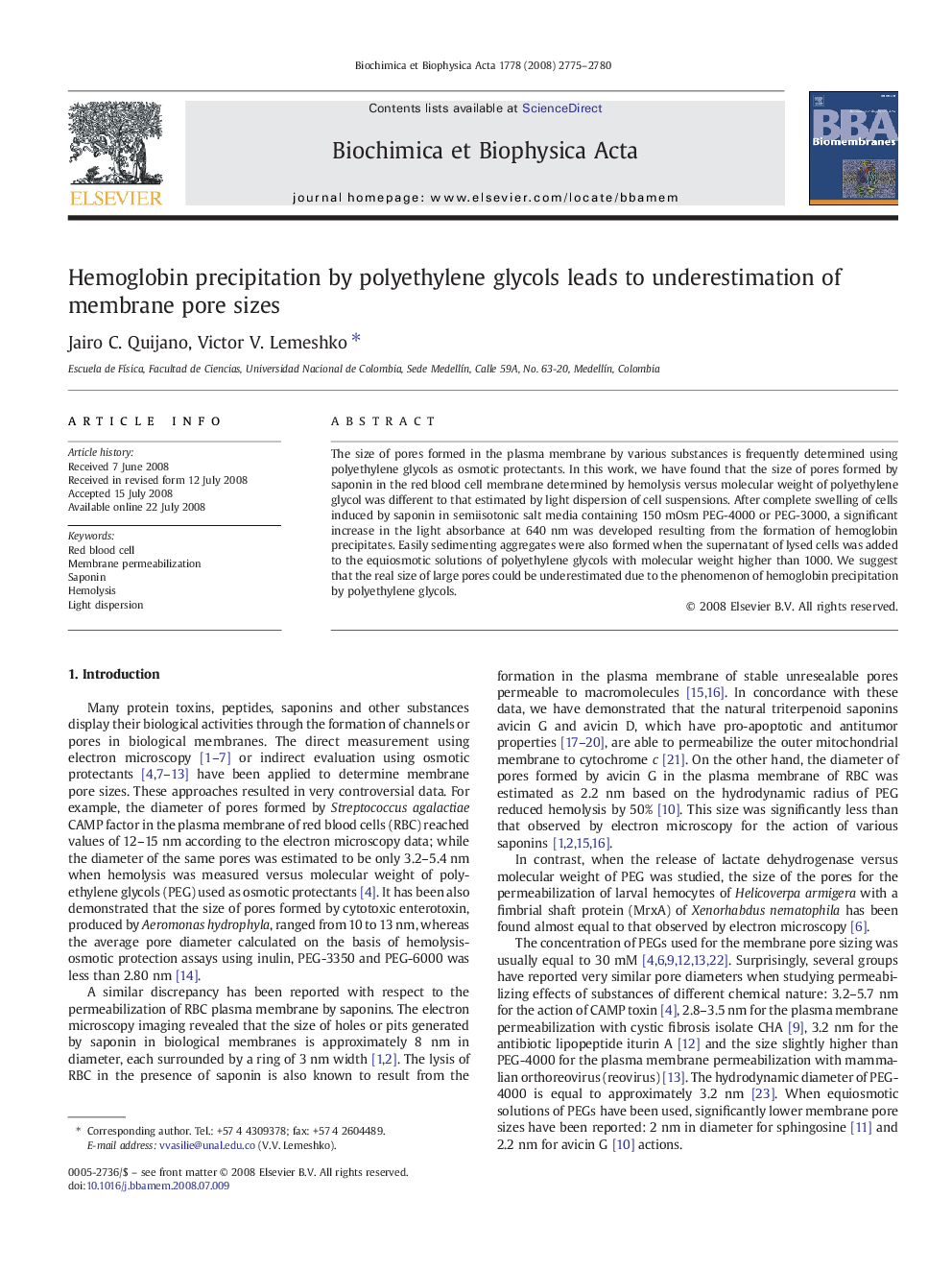| Article ID | Journal | Published Year | Pages | File Type |
|---|---|---|---|---|
| 1945126 | Biochimica et Biophysica Acta (BBA) - Biomembranes | 2008 | 6 Pages |
The size of pores formed in the plasma membrane by various substances is frequently determined using polyethylene glycols as osmotic protectants. In this work, we have found that the size of pores formed by saponin in the red blood cell membrane determined by hemolysis versus molecular weight of polyethylene glycol was different to that estimated by light dispersion of cell suspensions. After complete swelling of cells induced by saponin in semiisotonic salt media containing 150 mOsm PEG-4000 or PEG-3000, a significant increase in the light absorbance at 640 nm was developed resulting from the formation of hemoglobin precipitates. Easily sedimenting aggregates were also formed when the supernatant of lysed cells was added to the equiosmotic solutions of polyethylene glycols with molecular weight higher than 1000. We suggest that the real size of large pores could be underestimated due to the phenomenon of hemoglobin precipitation by polyethylene glycols.
